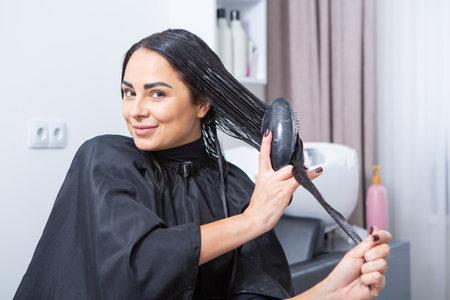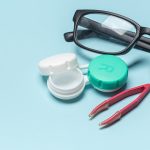1. Understanding PRP Therapy for Hair Loss
Hair loss can be frustrating, but Platelet-Rich Plasma (PRP) therapy has become a popular solution for those looking to restore hair naturally. This treatment uses your bodys own platelets to stimulate hair growth, making it a safe and effective option for many people.
What Is PRP Therapy?
PRP therapy involves drawing a small amount of your blood, processing it to concentrate the platelets, and then injecting the platelet-rich plasma into your scalp. These platelets contain growth factors that help stimulate hair follicles, encouraging new hair growth and improving hair thickness.
How PRP Therapy Works
The process of PRP therapy includes three main steps:
| Step | Description |
|---|---|
| 1. Blood Draw | A small sample of your blood is taken, usually from your arm. |
| 2. Processing | The blood is placed in a centrifuge to separate the platelet-rich plasma from other components. |
| 3. Injection | The concentrated PRP is injected into areas of the scalp experiencing hair thinning or loss. |
Why Is PRP Therapy Popular?
Many people choose PRP therapy because it is a non-surgical, minimally invasive treatment with little downtime. Since it uses your own blood, the risk of allergic reactions or complications is low. Additionally, PRP therapy has been shown to improve hair density and slow down hair loss over time.
2. How to Prepare for Your PRP Treatment
Preparing for your PRP therapy session is essential to ensure the best results and a smooth experience. Below, we’ll cover dietary restrictions, pre-treatment guidelines, and what to expect during your consultation.
Dietary Restrictions
What you eat before your PRP treatment can impact the quality of your platelet-rich plasma. Follow these dietary guidelines:
| Food Type | Recommended | Avoid |
|---|---|---|
| Hydration | Drink plenty of water | Avoid alcohol and caffeine 24 hours before treatment |
| Nutrient-Rich Foods | Eat leafy greens, fruits, and lean proteins | Avoid processed foods and excessive sugar |
| Supplements | If approved by your doctor, take vitamin C & zinc | Avoid blood-thinning supplements like fish oil or aspirin |
Pre-Treatment Guidelines
A few simple steps can help ensure your PRP therapy is as effective as possible:
- Avoid Blood Thinners: If youre taking any medications that thin the blood, consult your doctor about pausing them before treatment.
- No Smoking or Alcohol: Avoid smoking and alcohol at least 48 hours before your session to promote better healing.
- Cleansing Your Scalp: Wash your hair with a mild shampoo on the day of your appointment to keep the area clean.
- Avoid Hair Products: Do not apply any gels, sprays, or styling products before treatment.
- Eat a Healthy Meal: Having a nutritious meal before your session can prevent dizziness or lightheadedness.
Your Consultation: What to Expect
Your initial consultation is an important step in the process. Here’s what you should be prepared for:
- Medi cal History Review: Your provider will ask about any existing health conditions or medications you’re taking.
- S calp Examination: The specialist will assess your hair loss pattern and determine if PRP therapy is right for you.
- Treatment Plan Discussion: You’ll learn how many sessions you might need based on your hair loss severity.
- C ost & Expectations: Your provider will discuss pricing, expected results, and post-treatment care.
- A nswering Your Questions: This is the perfect time to clarify any doubts or concerns you have about the procedure.
The Bottom Line on Preparation
Taking the right steps before your PRP treatment can make a big difference in your results. By following dietary recommendations, avoiding certain substances, and preparing for your consultation, youll set yourself up for success. Stay consistent with these guidelines, and you’ll be ready for a smooth PRP experience!
![]()
3. What Happens During a PRP Session
Understanding what happens during a PRP therapy session can help ease any anxiety and set clear expectations. Here’s a step-by-step breakdown of the process, from the initial blood draw to the final injection.
Step 1: Drawing Your Blood
The first step in PRP therapy is drawing a small amount of your blood, typically from your arm. This process is similar to a routine blood test and takes just a few minutes.
Step 2: Centrifugation – Separating the PRP
Once your blood is collected, it is placed into a centrifuge—a machine that spins rapidly to separate its components. The spinning process isolates the platelet-rich plasma (PRP), which contains growth factors that help stimulate hair follicles.
How Long Does Centrifugation Take?
| Step | Time Required |
|---|---|
| Blood Draw | 5-10 minutes |
| Centrifugation | 10-15 minutes |
| PRP Preparation | 5 minutes |
| Total Time Before Injection | 20-30 minutes |
Step 3: Preparing the Scalp
Before injecting the PRP, your provider will clean your scalp to prevent infection. A numbing cream or local anesthetic may be applied to minimize discomfort during the injections.
Step 4: Injecting the PRP into the Scalp
The PRP is then injected into specific areas of the scalp where hair thinning or loss has occurred. Multiple small injections are administered using a fine needle to ensure even distribution.
Pain Management Options During PRP Injections
- Numbing Cream: Applied before treatment to reduce sensation.
- Local Anesthesia: Injected into the scalp for more effective pain relief.
- Icing: Helps numb the area before and after injections.
- Mild Pain Relievers: Over-the-counter medications like ibuprofen can be taken if needed (consult your doctor first).
Step 5: Post-Injection Care
The entire procedure typically takes about 45-60 minutes. After the injections, you may experience mild redness or swelling, but this usually subsides within a day or two. Your provider will give you specific aftercare instructions to ensure proper healing and maximize results.
4. Post-Treatment Care and Recovery
After your PRP therapy session, proper aftercare is essential to ensure the best possible results. While the procedure itself is minimally invasive, taking care of your scalp in the following days will help maximize hair growth and minimize any potential side effects.
Understanding Aftercare Instructions
Your provider will give you specific post-treatment guidelines, but here are some general aftercare tips to follow:
- Avoid washing your hair: Wait at least 24 hours before shampooing to allow the PRP to fully absorb into your scalp.
- Skip harsh hair products: Avoid using hair sprays, gels, or other styling products for at least 48 hours.
- Stay out of direct sunlight: Your scalp may be sensitive, so limit sun exposure and wear a hat if needed.
- Avoid strenuous activities: Refrain from heavy exercise or activities that cause excessive sweating for at least 24–48 hours.
- No alcohol or smoking: These can slow down the healing process and affect circulation to the scalp.
Potential Side Effects
Most patients experience minimal side effects after PRP therapy. However, it’s important to be aware of what’s normal and when to contact your provider.
| Side Effect | Description | When to Seek Help |
|---|---|---|
| Mild Redness & Swelling | The treated area may appear slightly red and swollen for a day or two. | If swelling persists beyond 72 hours or worsens. |
| Tenderness | You may feel mild discomfort in the treated area, similar to a bruise. | If pain becomes severe or does not improve with time. |
| Tiny Bruises | Minor bruising at injection sites is common but should fade within a few days. | If bruising spreads significantly or lasts longer than expected. |
| Mild Itching | The healing process may cause slight itching on the scalp. | If itching becomes intense or is accompanied by a rash. |
Maximizing Your Results
The success of PRP therapy depends not only on the treatment itself but also on how well you take care of your scalp afterward. Here are some ways to enhance your results:
Nourish Your Hair from Within
A balanced diet rich in vitamins and minerals can promote healthy hair growth. Consider adding biotin, iron, and zinc to your daily intake.
Stay Consistent with Follow-Up Sessions
Your provider may recommend multiple PRP sessions for optimal results. Be sure to follow the suggested treatment plan for long-term benefits.
Avoid Harsh Hair Treatments
Avoid chemical treatments such as coloring, perming, or straightening for at least a week post-treatment to prevent irritation.
Use Gentle Hair Products
Sulfate-free shampoos and conditioners can help maintain scalp health without causing unnecessary irritation.
5. Expected Results and Follow-Up Treatments
PRP therapy for hair loss is a gradual process, and results will vary depending on factors like your hair loss severity, overall health, and how well your body responds to the treatment. Understanding what to expect can help you stay patient and committed to the process.
Typical Timeline for Hair Regrowth
Most patients start noticing improvements within a few months of starting PRP therapy. Here’s a general timeline of what you can expect:
| Timeframe | Expected Changes |
|---|---|
| 0-1 Month | No visible changes yet; some patients may experience mild shedding as weaker hairs fall out. |
| 2-3 Months | Early signs of reduced hair shedding; some patients notice slight thickening of existing hair. |
| 4-6 Months | Visible improvement in hair density and texture; new hair growth may become noticeable. |
| 6-12 Months | The most significant results appear; hair looks fuller and healthier. |
| 12+ Months | Sustained improvement with maintenance treatments as needed. |
How Many PRP Sessions Do You Need?
A typical PRP treatment plan includes an initial series of sessions followed by maintenance treatments to sustain results. Most patients follow this schedule:
- Initial Phase: 3 to 4 treatments spaced about 4 to 6 weeks apart.
- Maintenance Phase: A session every 4 to 6 months, depending on individual response.
Scheduling Follow-Up Treatments for Best Results
Your provider will create a personalized plan based on your progress. Consistency is key—regular follow-up treatments help maintain hair regrowth and prevent further thinning.
Tips for Maximizing Your Results:
- Follow the recommended treatment schedule.
- Avoid smoking and excessive alcohol consumption, as they can hinder healing.
- Use gentle, sulfate-free shampoos to support scalp health.
- If recommended, combine PRP with other treatments like minoxidil or laser therapy for enhanced results.
If youre unsure about when to book your next session, consult with your provider—they can assess your progress and suggest the best timing for your next PRP treatment.


